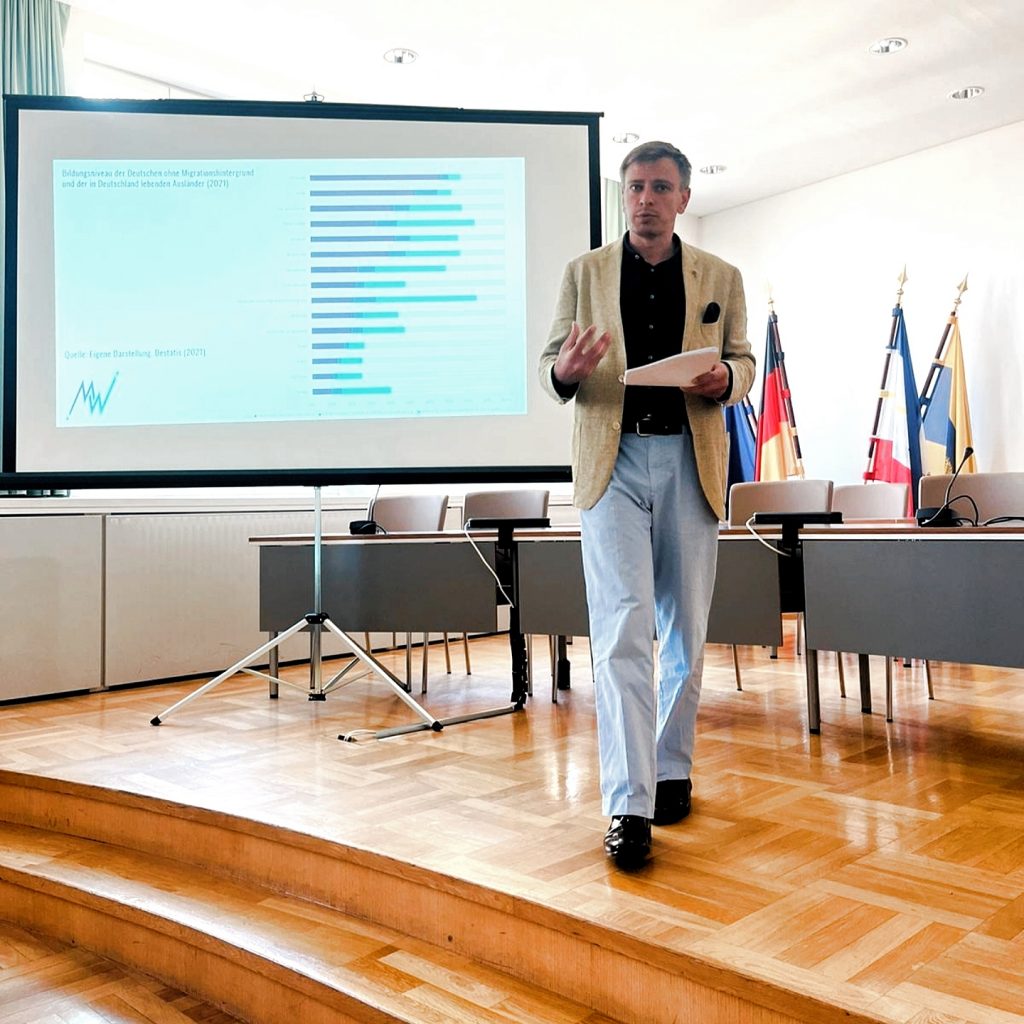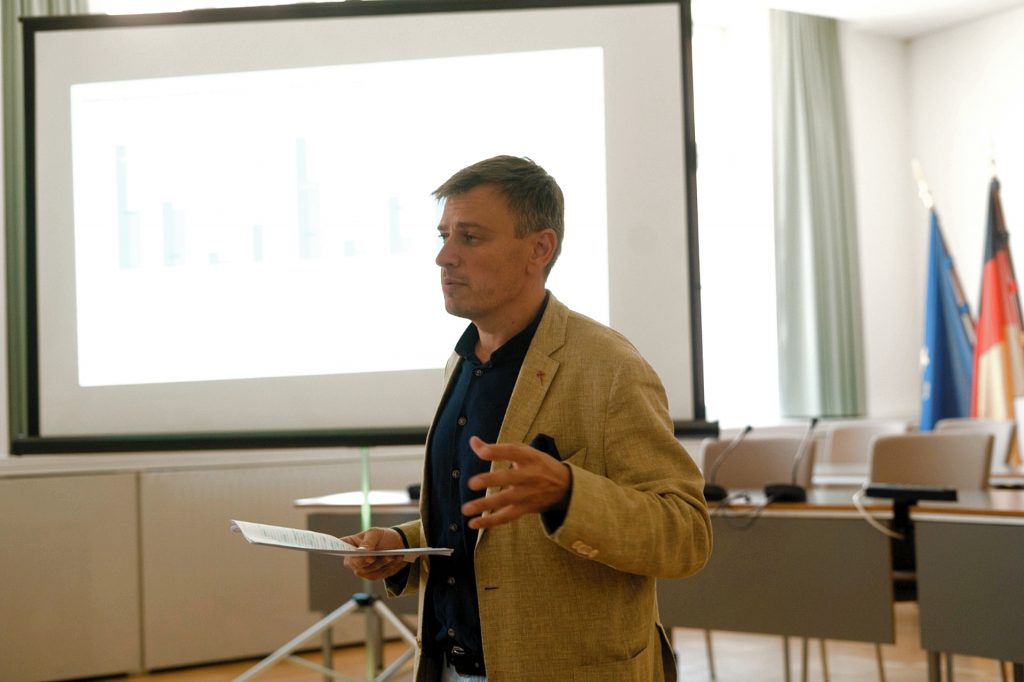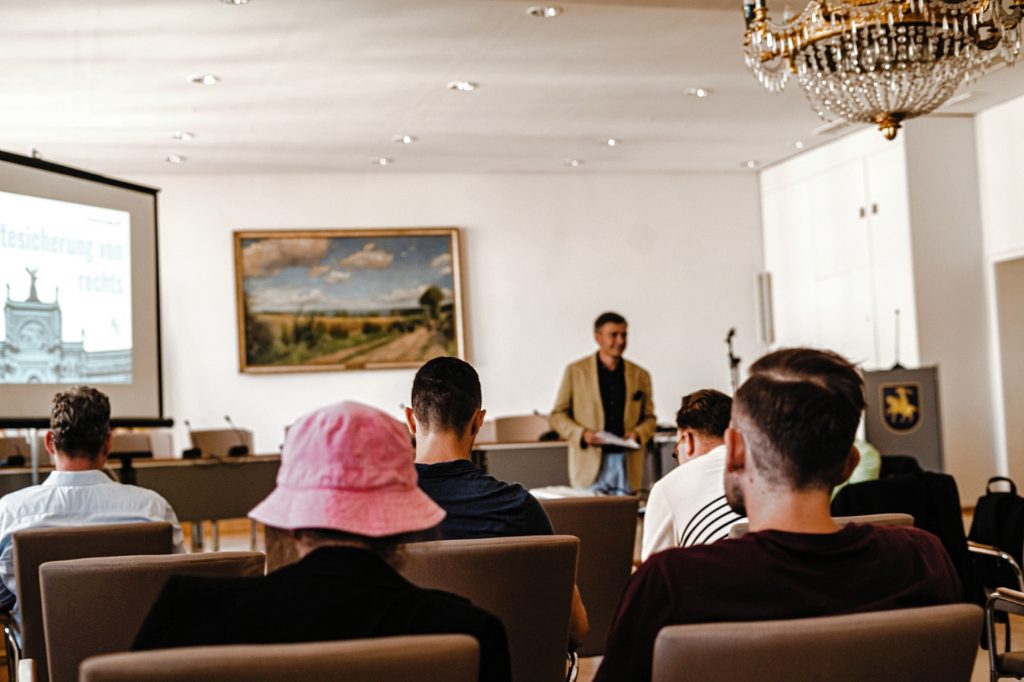On 20 August 2023, Yurij Kofner, economist at the MIWI Institute gave a lecture on the topic of “Securing skilled labour: a right-wing perspective” at the summer academy of the Young Alternative Berlin and Mecklenburg-Vorpommern in Schwerin. The content of the lecture was based on his study “Immigration as a solution to Germany’s shortage of skilled workers?”, which will be published by the Austrian Freilich journal later this year.
Conspectus of the lecture:
Despite a historically low unemployment rate of 2.9 per cent, German businesses lack a record number of over 533,000 skilled workers, costing them between 2.1 and 2.5 per cent of GDP. Given current demographic trends, the skilled labour gap is expected to rise to between 3 and 5 million unfilled jobs by 2030, which will reduce the Federal Republic’s growth trajectory by 14 percent cumulatively over the 2020s.
Sectors with the highest relative skill shortages are social work, education, care, crafts, drivers and IT, and in the medium term also mechanical engineering and electronics.
The severity of the skills gap is proportional to the level of skills demand, i.e. for professionals the job surplus rate is 40.8 percent, for specialists 44.3 percent and for experts almost 60 percent of job vacancies are unfilled. In contrast, the labour market has an oversupply of over 1 million unskilled unskilled workers.
Whether immigration can help alleviate the shortage of skilled workers depends strongly on the country of origin. Immigrants from West and East Asian countries generally have very high levels of education and labour skills, especially Chinese, Indians and US-Americans. These are also the population groups with the highest median incomes in Germany.
The opposite is true for immigrants, primarily asylum seekers, from Africa and the Middle East, where between 55.5 and up to three quarters of working-age people have no vocational qualification and 31 per cent do not even have a school-leaving qualification.
A similar picture emerges with regard to the fiscal impact of immigration on the state budget. As a rule, natives and immigrant groups from West and East Asian countries make a positive net contribution to the treasury, i.e. they generally pay in more taxes than they receive back in public services. For immigrants and especially asylum seekers from Africa and the Middle East, it is usually the other way around: they cost the welfare state significantly more over their entire lives than they ever pay in taxes, as they are to a large extent either unemployed (almost 30 per cent among immigrants from the countries of origin of asylum) or employed in low-wage jobs with low or no qualification requirements.
Although cheap labour migration does indeed exert a small negative wage pressure on native workers, the much bigger problem in the German case is that current immigration is mainly not into the labour market but directly into the welfare system. Every fourth Hartz IV recipient is a foreigner and half of all nationals of countries of asylum origin receive unemployment benefits.
Uncontrolled and irregular immigration is therefore absolutely the wrong way to address the skills shortage. Other measures such as (state-imposed) wage increases, an extension of working hours and a higher labour force participation of women are also less suitable to alleviate the shortage of skilled labour – for different reasons that are explained in the study.
More effective or, from a conservative point of view, more suitable measures in the author’s opinion would be:
- Streamlining the state back to 2005 levels, which could free up 166,000 largely well-qualified administrative staff.
- Incentives to stop and reverse the average annual net outflow of 46,600 highly qualified German citizens of prime working age.
- Introducing controlled immigration policies along the lines of Canadian, Australian or even Japanese and Korean models, mainly allowing only net highly skilled taxpayers to immigrate according to the needs of the labour market (as well as students).
- A (further and re)education offensive to raise the education and qualification levels of the labour force already in Germany, especially the more than 1 million unskilled unskilled workers who currently cannot find a job.
- Introducing an activating family policy with generous tax benefits, housing measures and better childcare services. Limiting abortions to those with medical or criminal indications (which account for only 5.6 per cent of all abortions) over 30 years alone would add about 3.3 million new workers to the economy. And political incentives to raise the fertility rate of German women back above the replacement rate of 2.1 would increase the German population by 12.5 million people over the same period.
- Ultimately, Germany could also go the “Korean” or “Japanese” way by seeing the shortage of skilled workers not only as a problem but also as an opportunity to address demographic change with digitalisation and robotisation. Increased automation with current technologies could already reduce the demand for 1.4 million immigration-intensive low-skilled occupations such as cleaning, warehouse logistics, agricultural support services and food production.



